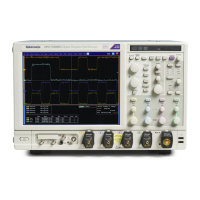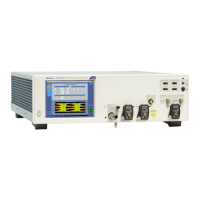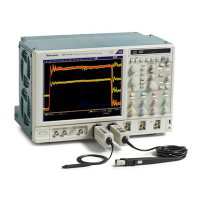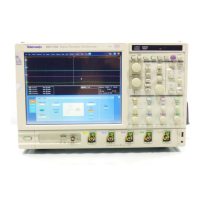Oscilloscope R eference Setup and hold trigger
Setup
/hold triggering uses the setup/hold violation zone to detect when data is unstable too near the time i t
is clocked. Each time trigger holdoff ends, the instrument monitors the data and clock sources. When
a clock edge occurs, the instrument checks the data stream it is processing (from the data source) for
transitions occurring within the setup/hold violation zone. If any occur, the instrument triggers with the
trigger point located at the clock edge.
Positive settings for both setup and hold times (the most common application) locate the setup/hold
violation zone so that it spans the clocking edge as shown above in the top waveform. The instrument
detects and triggers on data that does not become stable long enough before the clock (setup time violation)
or
that does not stay stable long enough after the clock (hold time violation).
Negative settings for setup or hold times skew the setup/hold violation zone to locate it before or after the
cl
ocking edge as shown above in the center and bottom waveforms. The instrument can then detect and
trigger on violations of a time range that occurs before or one that occurs after the clock.
NOTE. Keep the hold-time setting to no more than 2.5 ns less than one-half the clock period (hold time <
(period/2) –2.5 ns) or the instrument cannot trigger (this assumes a 50% duty cycle clock).
DSA/DPO70000D, MSO/DPO/DSA70000C, DPO7000C, and MSO/DPO5000 Series 707

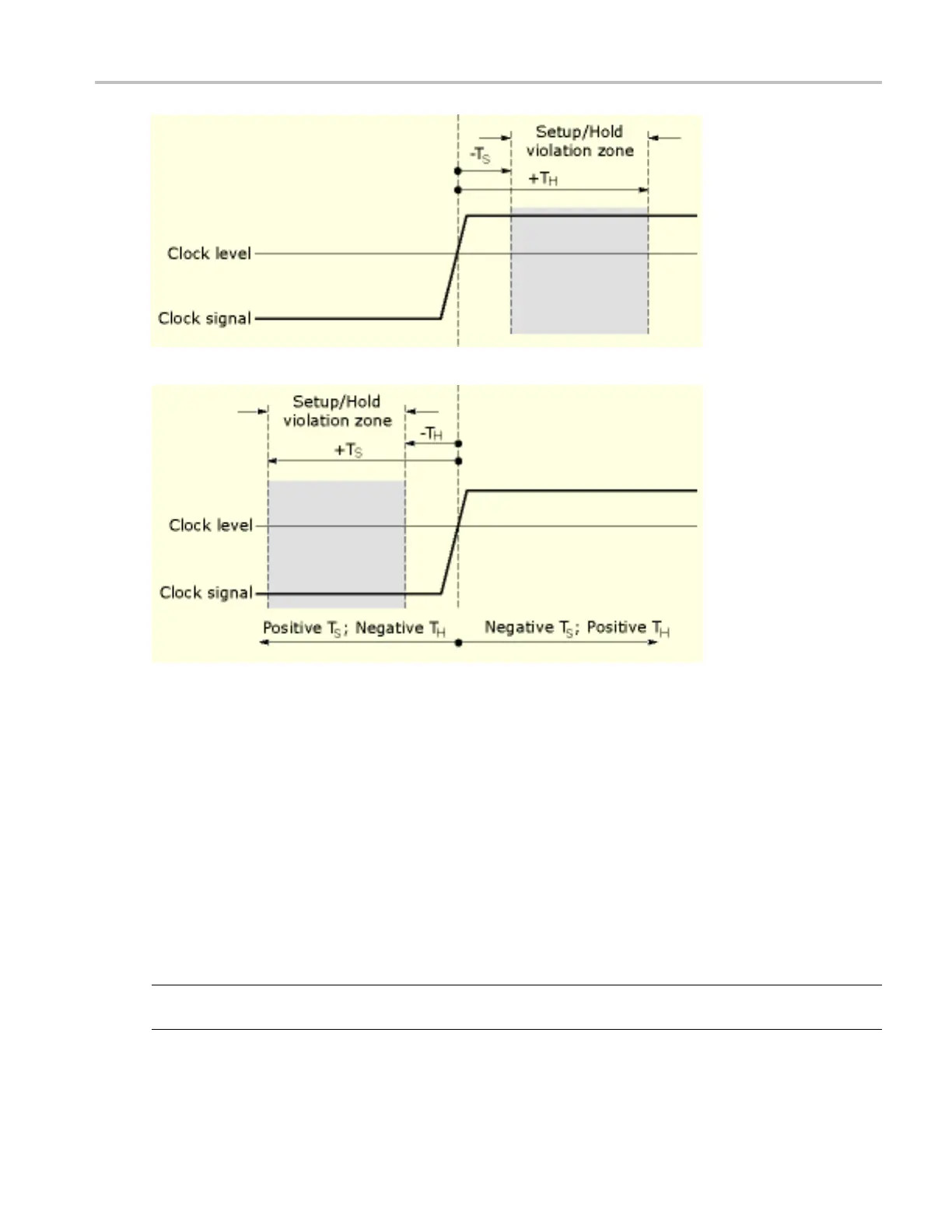